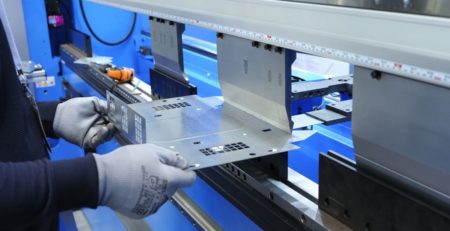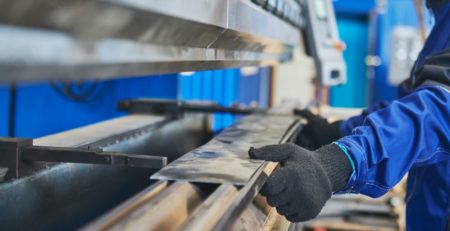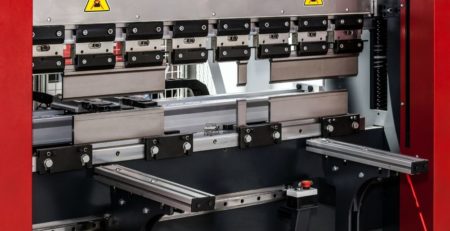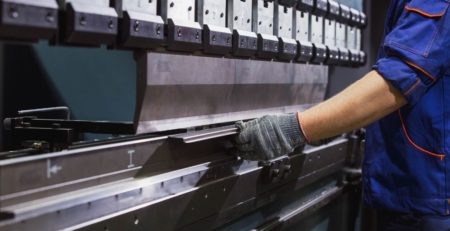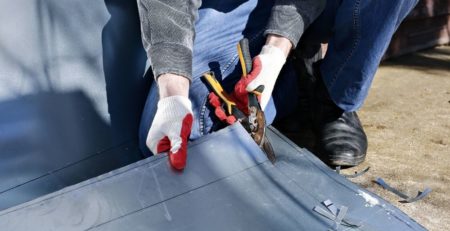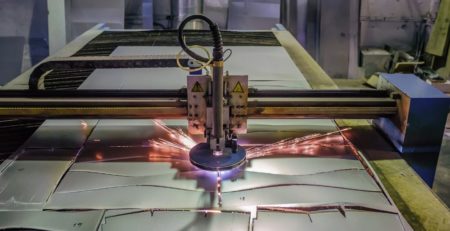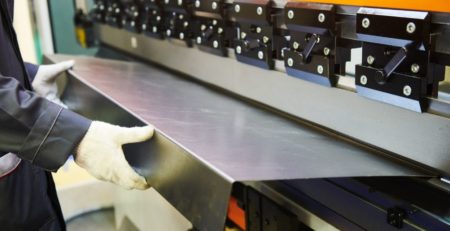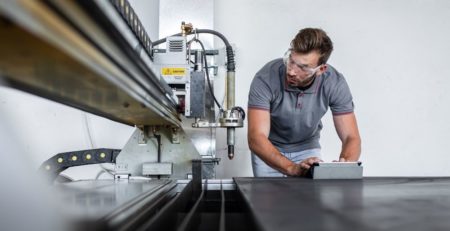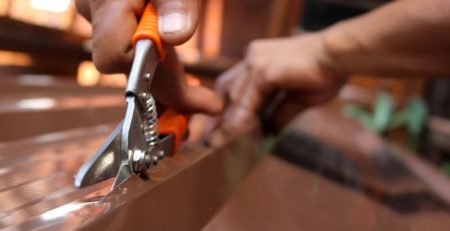Why Laser Cutting Is Best for Sheet Metal Fabrication
Sheet metal fabrication may involve bending, rolling, welding, stamping, or punching through a variety of metals. But it most often requires cutting sheet metal into different lengths, shapes, and sizes. Laser cutting stands as the superior choice because of its precision, speed, efficiency, and ability to perform while generating a minimum of waste. Laser cutting has been fine-tuned over the years to meet the evolving needs of various industries.
Investing in laser cutting technology is a prudent decision for any business engaged in sheet metal work. Learn more about why laser cutting is best for sheet metal fabrication.
Types of Laser Cutters and How They Work
Laser cutting machines have been around for decades, and the earliest types of laser cutters, CO2 laser cutters, are still going strong. Learn more about CO2 laser cutters and the innovative machines that have come along to build upon their legacy.
CO2 Laser Cutters
CO2 laser cutters generate laser light from a gas mixture that primarily consists of carbon dioxide. The laser light is produced by an electrical discharge in the gas mixture. CO2 laser cutters are highly favored because of their versatility. They can be used to cut or engrave numerous materials, including plastic, wood, and glass. However, they are most commonly used for stainless steel and aluminum, making them indispensable in the metal fabrication industry.
Fiber Laser Cutters
A fiber laser cutting machine operates by generating a laser from a gas, typically a mixture of carbon dioxide, helium, and nitrogen. This laser is then amplified and focused through a series of mirrors and an optical fiber onto the metal workpiece. The concentrated laser beam, with its intense heat, melts and vaporizes the metal along the predetermined cut line. As the machine moves the laser across the metal surface, it continues to vaporize the material, creating a precise cut. This process allows for high precision and intricate cuts in metal fabrication.
Fiber laser cutting machines for metal fabrication emit lasers with a wavelength typically in the infrared range between 780 and 2200 nanometers (nm). These wavelengths are more thoroughly absorbed by metals, ensuring precise and efficient cutting. Most fiber laser cutting machines for metal fabrication generate a laser with a wavelength that typically falls in the range of one micrometer (1000 nm), which is easily absorbed by metallic materials, making fiber laser cutters perfect tools for cutting metals such as copper, brass, and aluminum. Fiber laser cutters’ speed, precision, and ability to cut thin materials efficiently make them a popular choice in the sheet metal fabrication industry.
Nd: YAG/Nd: YVO Laser Cutters
Neodymium-doped yttrium aluminum garnet (Nd: YAG) and neodymium-doped yttrium orthovanadate (Nd: YVO) lasers are solid-state lasers. They use the neodymium-doped crystals as the lasing medium, where the light is generated. These laser cutters are more commonly used in operations requiring high power and superior precision, such as drilling, cutting, and engraving. They are not as widely used in the metal fabrication industry due to their higher operational costs.
Diode Laser Cutters
Diode lasers, as the name suggests, use semiconductor diodes as the lasing medium. They are known for their efficiency and compact size compared to other laser types. However, they are not commonly used for cutting. Instead, they are used for marking metals, engraving, or low-power cutting tasks because of their relatively lower power output.
Metal fabricators most commonly use CO2 and fiber lasers due to their ability to handle a wide range of materials, and their superior cutting abilities. Nd: YAG/Nd: YVO and diode lasers, on the other hand, are more specialized tools, often bearing a higher price tag but offering unique capabilities where precision and power are paramount.
Why Laser Cutters Are Best for Metal Fabrication
While C02 lasers are still widely used, there are many reasons why laser cutters are best for metal fabrication, including the following:
Precision
One of the foremost strengths of laser cutting machines is their unparalleled precision. Unlike traditional cutting methods, laser cutting allows for highly accurate cuts, down to the minutest measurements. This level of precision enables intricate designs and patterns to be executed with ultimate detail and consistency.
Efficiency
Laser cutters’ ability to perform intricate cuts rapidly reduces the time required for the fabrication process, increasing overall productivity. Additionally, with CNC (computer numerical control), they require less human intervention, making for a safer work environment and freeing up personnel to focus on other critical tasks. Consequently, industries benefit from reduced labor costs and increased throughput.
Speed
Laser cutting machines stand out for their impressive speed. As they use light to cut materials, they can perform their tasks at a significantly faster pace than mechanical cutting methods. This efficiency translates into quicker turnaround times, enabling businesses to meet their production targets promptly and effectively.
No Contact With the Workpiece
A key advantage of laser cutting is its noncontact nature. As the laser doesn’t physically interact with the material, there’s minimal risk of contamination or accidental damage to the workpiece. This feature also reduces wear and tear on the machine itself, extending its lifespan and reducing maintenance costs.
Versatility
Laser cutters exhibit exceptional versatility, capable of handling a wide variety of materials, ranging from metals and plastics to wood and glass. They can easily accommodate different thicknesses and shapes, and their precision allows for complex designs that might be unattainable with other cutting methods.
Minimizing Waste
Laser cutting technology is environmentally friendly, significantly reducing waste compared to traditional cutting methods. Since the laser beam can be programmed to cut with extreme precision, and because the laser vaporizes the material it cuts away, it minimizes the amount of material wasted during the fabrication process. This efficiency not only saves businesses money but also contributes to sustainable practices.
Safey Precautions
Despite these numerous benefits, it’s important to remember that laser cutting machines do require certain safety precautions. The intense light produced by lasers can be harmful to the eyes, necessitating the use of protective eyewear. Moreover, adequate ventilation is a must, as the process can generate dangerous fumes and heat. By observing these safety measures, laser cutting can be a safe, efficient, and highly effective method for sheet metal fabrication.
More on CNC Controls for Precise Cutting
Laser cutting machines are powered by CNC, which allows for precise and repeatable cutting. By using CAD/CAM software, designers and technicians can develop precise instructions in the form of digital designs for these machines to interpret and execute with astonishing accuracy. This advanced technology enables laser cutters to perform complex cuts and shapes consistently, enhancing the overall precision of the fabrication process and making exact duplication from one piece to the next possible, another of the many reasons why laser cutters are best for metal fabrication.
No other method of sheet metal fabrication can rival the precision, speed, and efficiency of laser cutting. Mac-Tech stands as a reputable source for both new and pre-owned metal fabrication machinery, including CNC fiber laser cutting machines. Whether you’re looking to streamline your production process, minimize waste, or produce work with the utmost precision, Mac-Tech’s comprehensive range of laser cutting solutions is worth considering. Remember, investing in the right technology can make a significant difference in the quality, efficiency, and profitability of your operations.




